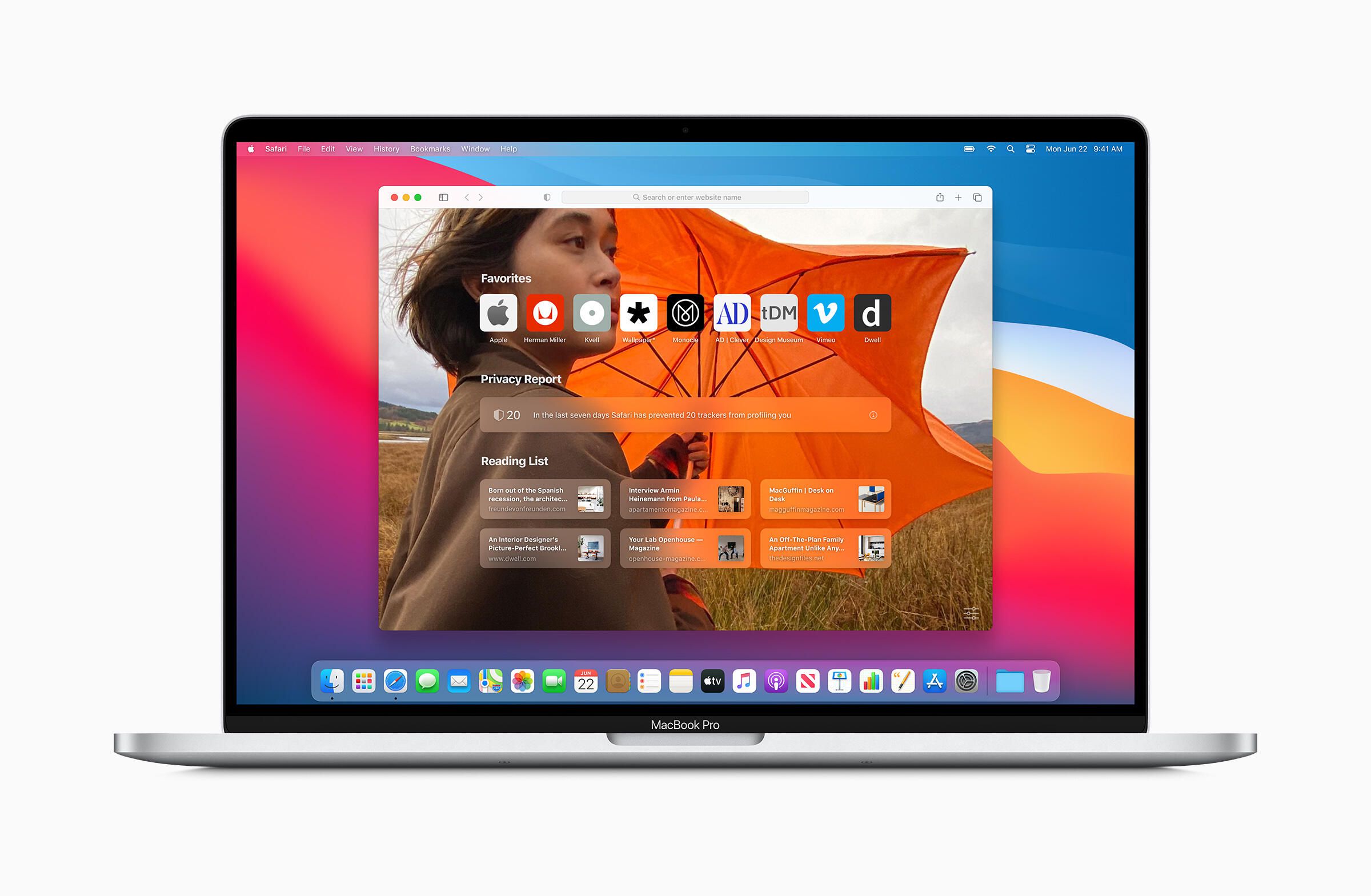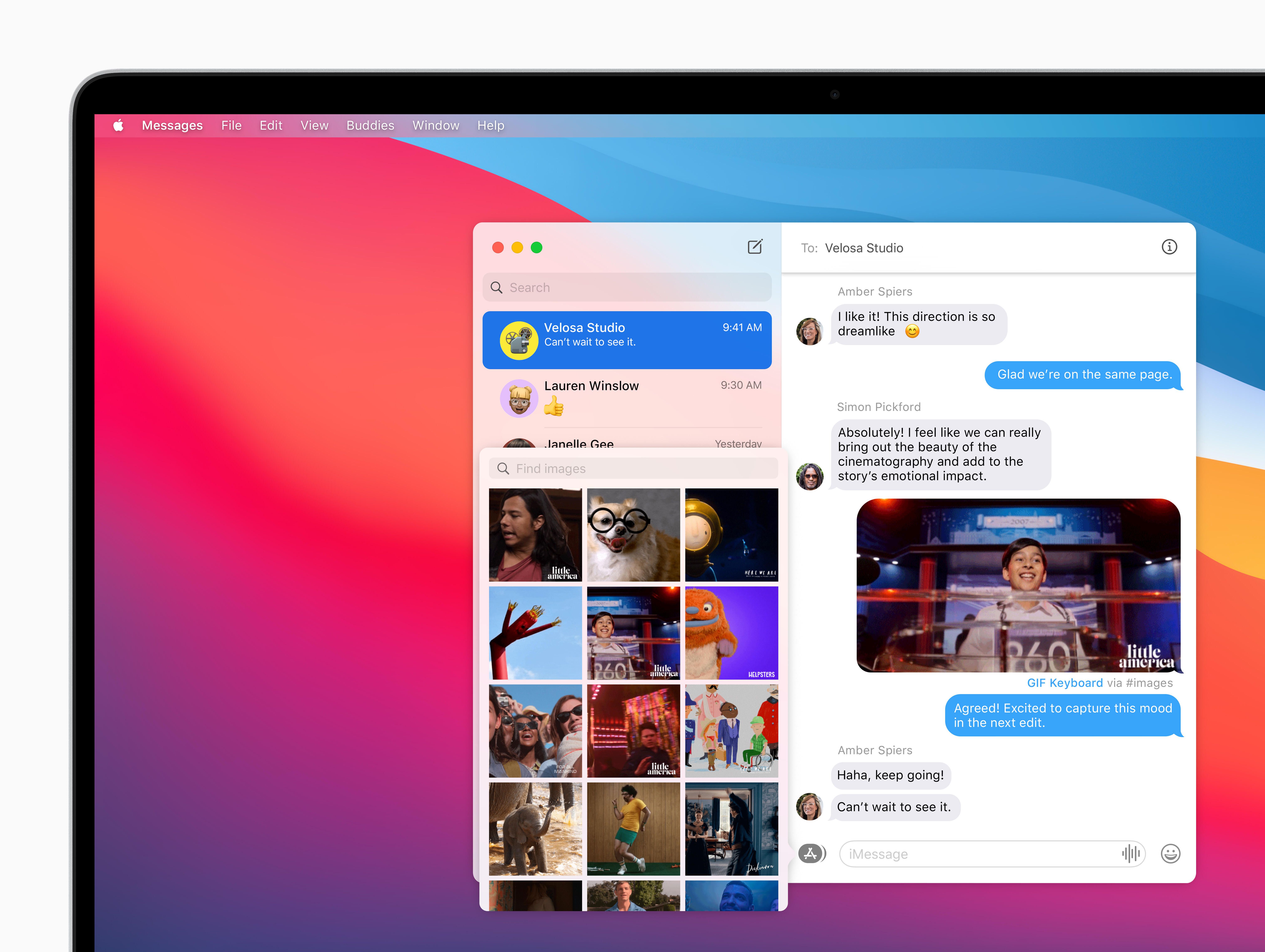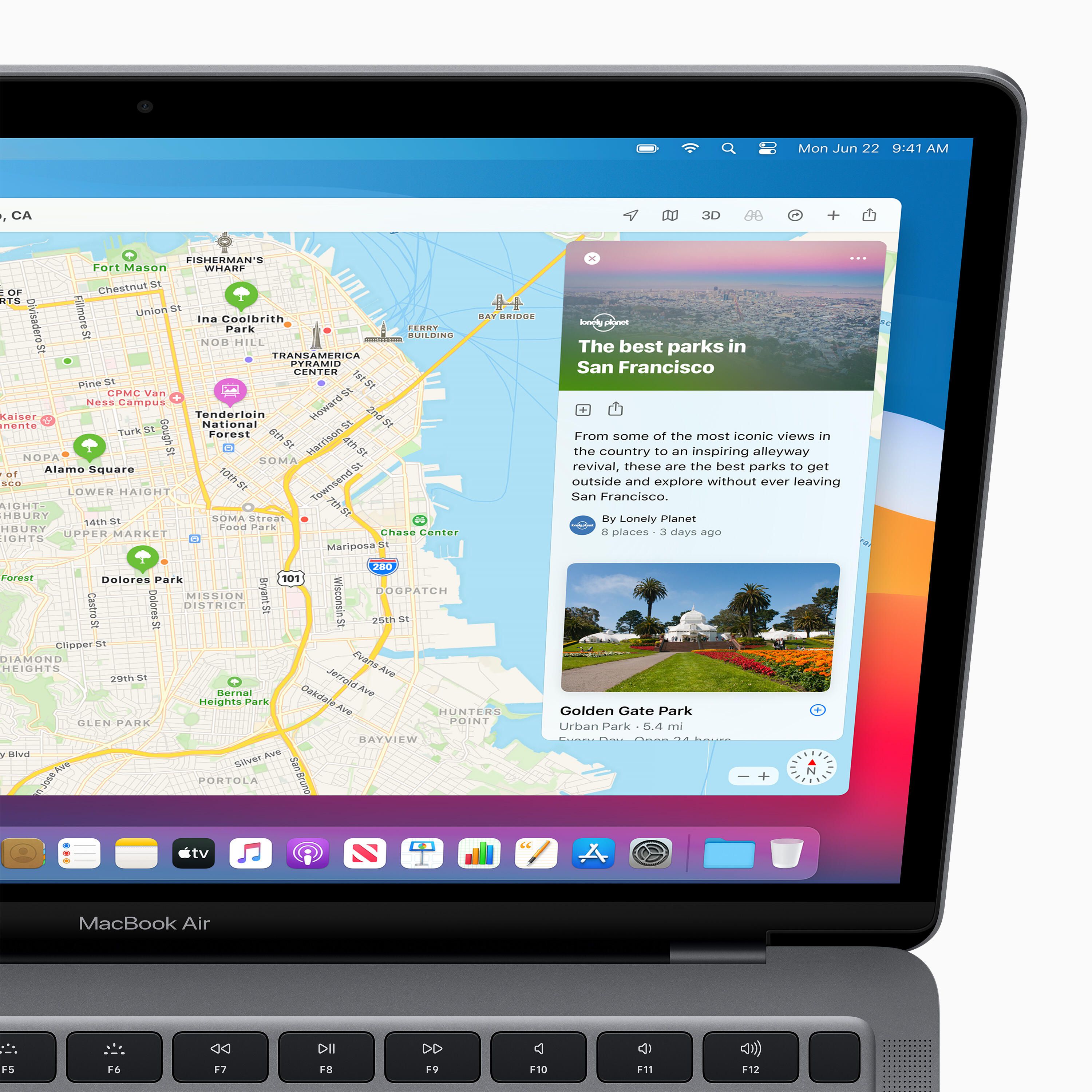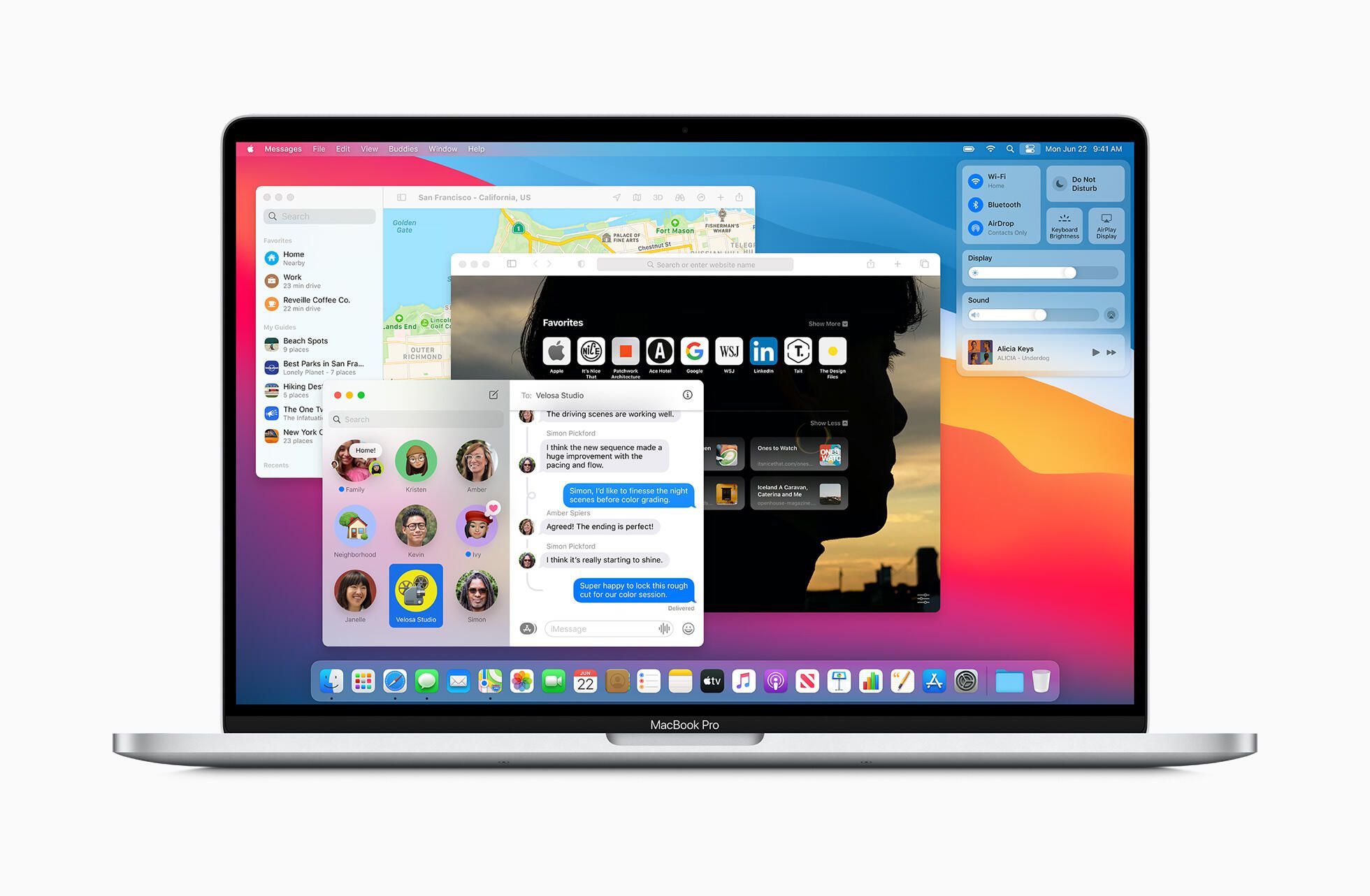Find out the latest features on MacOS Big Sur
Big Sur will be the first version of the OS to run on Apple's upcoming Arm-based Macs, as well as its older Intel-based machines, Apple announced at its annual Worldwide Developers Conference in June.
MacOS Big Sur is currently available to download as a developer beta (here's how to download MacOS Big Sur, and which Macs you can run it on). If you're not a developer, we recommend waiting until the public beta comes out this month, or, even better, it's generally released in the fall. The longer you wait, the less buggy the new system is likely to be.
Here are five new MacOS Big Sur features you'll want to check out when you do make the switch, and how you'll use them after you download the beta or main release version later.
Widgets

What's new: Like in iOS 14 and iPadOS 14, MacOS Big Sur brings widgets to your home screen. Widgets are large, dynamic icons that display live app information, like the weather, or your daily step count.
How you'll use it: Instead of opening weather, calendar or fitness tracking apps, use widgets to see an overview of their core information displayed in a live feed on your home screen. Display different widgets at different times of day, so you see the weather in the morning and the news in the afternoon, for example. Create widgets in small, medium or large sizes.
Safari

What's new: Perhaps the biggest upgrade in MacOS Big Sur comes in Apple's Safari web browser. Apple said that this is the biggest update to Safari since its launch in 2003. The revamped browser will load the websites you visit most often faster, and have better tab management abilities. You'll also find improved privacy features, including a privacy report button that lets you see how websites track your data, and monitor if any of your passwords were compromised in a security breach
A new App Store category for Safari extensions will let you customize which sites and times each extension is used, instead of all the time. And a customizable Safari start page will let you pick from a curated group of wallpapers, or use one of your own photos. Translate languages from seven different languages with a built-in feature, and manage your tabs more effectively.
How you'll use it: Open the Safari browser the same way you did before. Where you go next depends on what you want to do: If you scroll to a website in another language, you'll be able to hit a button to translate it. If you have several tabs open, you'll see the website favicons by default to spot the one you want faster. You'll also be able to preview the content in a tab by hovering over it, and clicking to delete all tabs to the right of one tab. Tap the privacy report button to see what data is being collected on the site you're browsing.
Messages

What's new: The new Messages app on MacOS Big Sur includes ways to pin conversations (similar to a feature in the new iOS 14), options to better wrangle group messages, a redesigned search function and new options for designing Memoji and using message effects.
How you'll use it: Pin important conversations to the top of the app for faster access. Direct-message one person in a group and thread messages within a group, to keep those big chats under control. Type someone's name out in the group to tag them directly in the conversation. You can choose to only be notified of new messages in the group when your name is mentioned. Organize your search results by links, photos or matching terms. Add message effects like balloons and confetti, and create and customize your Memoji on the Mac.
Maps

What's new: The new Maps app on Big Sur includes more options to help you explore new places and share what you find, see detailed indoor maps of major airports and shopping centers, see a 360-degree view of a destination, and use EV routing.
How you'll use it: Explore an area with Guides from trusted resources, or create your own, marking your favorite restaurants, parks and vacation spots that you can share with friends and family. Get a 360-degree view of a destination with a feature called Look Around. See detailed indoor maps of major airports and shopping centers. If you have an electric car or scooter, use EV routing, which will take factors like charging stations, weather, elevation and your electric vehicle's current charge level into account on your route.
iPhone ($699 at Apple) and iPad ($255 at Back Market) apps

What's new: If you purchase one of Apple's upcoming Macs that are powered by the company's new Apple silicon chips, your computer will be able to natively run iPhone and iPad apps.
How you'll use it: Go to the Mac App Store to install the new apps. Many iOS apps will be able to run alongside MacOS apps. If you've already bought an app on iOS, you won't need to buy it again for MacOS -- you'll just download it there, too.
You should read it
- How to fix problems when upgrading to macOS 10.14 Mojave
- Learn 20+ new features on macOS Big Sur
- Apple updates Safari on iOS and Mac to block third-party cookies
- macOS Big Sur launches: Completely new interface, faster Safari, ARM support
- Apple intended FaceTime improvements for iOS, support HomeKit for macOS
- Consolidate applications on Apple's platforms, who benefits?
- New features on macOS 11 Big Sur
- Tim Cook talks about integrating iOS and macOS: 'I don't think that's what users want'
May be interested
- Use your phone properly, making your phone more durable
 your phone is a critical part of keeping you connected to friends and family, so follow these tips to make sure it keeps working for as long as possible.
your phone is a critical part of keeping you connected to friends and family, so follow these tips to make sure it keeps working for as long as possible. - Why not use a case for your iPhone
 why should not use cases for iphone? hope you find yourself the answer after this article and really comfortable with your iphone
why should not use cases for iphone? hope you find yourself the answer after this article and really comfortable with your iphone - How to create a Google Play account on your computer
 how to create a google play account on your computer. devices using the android operating system, when downloading applications on ch play (google play store), they must have a google play account. as we all know, all google services can use gmail account to login
how to create a google play account on your computer. devices using the android operating system, when downloading applications on ch play (google play store), they must have a google play account. as we all know, all google services can use gmail account to login - Signs that your phone is infected with a virus
 when your phone is infected with virus, you will encounter a variety of problems and they directly affect your usage.
when your phone is infected with virus, you will encounter a variety of problems and they directly affect your usage. - How to project iPhone screen on computer
 how to project iphone screen on computer. projecting the iphone screen on your computer makes it possible to experience the iphone on a larger screen or display content for others to see.
how to project iphone screen on computer. projecting the iphone screen on your computer makes it possible to experience the iphone on a larger screen or display content for others to see. - Instructions on how to charge the battery to best protect the phone battery
 - here's how to charge the battery to help increase the durability of the phone that you should not ignore.
- here's how to charge the battery to help increase the durability of the phone that you should not ignore.






 3 ways to downgrade to the old macOS version
3 ways to downgrade to the old macOS version macOS 13 Ventura: New Features, Supported Devices, and Release Date
macOS 13 Ventura: New Features, Supported Devices, and Release Date New features on macOS 11 Big Sur
New features on macOS 11 Big Sur 7 Favorite Hidden Features in macOS Sequoia
7 Favorite Hidden Features in macOS Sequoia 10 latest features of macOS Mojave
10 latest features of macOS Mojave